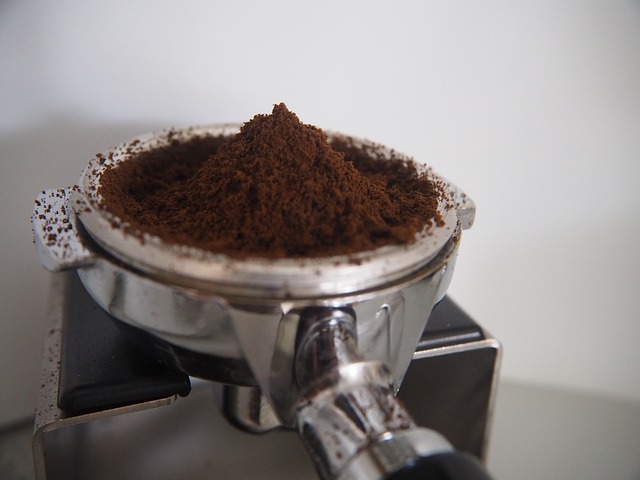What Is A Pressurized Portafilter, and How Does It Work?
A portafilter is a portion of an espresso machine that is used to prepare espresso. It is made of stainless steel. Essentially, it is a spoon-like utensil that is used to hold the ground coffee in place throughout the brewing process.
The portafilter is linked to the group head of the espresso machine, and it is here that hot water comes into contact with the ground beans and causes espresso to be extracted.
After the coffee extraction process is complete, a pressurized portafilter distinguishes itself from an unpressurized portafilter by adding additional pressure to the filter right after the procedure is completed. This is accomplished by the employment of a basket with a two-layer bottom that has been specifically developed.
Consequently, it is sometimes referred to as a “double-wall” portafilter, but the phrase “double-floor” portafilter may be more suitable in this instance.
There is just one hole in the second bottom of the pressurized portafilter, which allows the coffee to flow through and increases the pressure generated by the pressurized portafilter.
Ideas for a Winter BBQ in the Run-Up to Christmas Easy French Toast Latte Recipe
Lemon-infused espresso
Light Roast Coffee Brewing Guide
Use Flavored Syrups in these 9 Different Ways
Easy French Toast Latte Recipe
Lemon-infused espresso
Light Roast Coffee Brewing Guide
Use Flavored Syrups in these 9 Different Ways
Portafilter components are comprised of the following:
A portafilter is often composed of chrome, stainless steel, or brass in order to improve heat retention, but it includes a plastic or wooden handle to make it more user-friendly. It is made up of a few parts:
Basket for filtering:
The filter basket is housed inside the portafilter’s ring of metal. It is used to store coffee grinds. A bottom with holes in it serves as a screen and filters out unwanted material. It is via these holes that hot water infused with espresso taste is delivered to your cup.
Handle:
The handle is used to assist the barista in loading the portafilter and locking it into the espresso machine during the espresso extraction.
Spout:
A portafilter may have one or two spouts depending on its size. The spout is situated at the bottom of the filter basket, even below the screen of the filter basket. It only serves as a path for the coffee to pour into the cup, nothing more (or cups, in the case of a double spout). A portafilter without a spout is referred to as a naked portafilter or a portafilter with no bottom.
The operation of a pressurized portafilter
A pressurized portafilter makes use of a pressurized filter basket, which is also referred to as a dual-wall or double-wall basket in certain circles. In these portafilters, the coffee is really passed through two screens before it reaches the cup.
In the first stage, water is used to extract coffee from the ground beans, which runs out of the typical first screen into a holding space between the first and second screens. As the pressure on the second screen grows, the coffee is forced out through a single hole in the screen.
Pressure increases as a result of the second screen reducing the number of outlets accessible to the coffee. As the espresso aerates as it passes through the second screen and into the spout, a slightly artificial crema (foam) is formed on the surface of the espresso.
Following a trip through the portafilter, espresso pours from the spout into the cup of choice.
After passing through the portafilter, the espresso drops from the spout into the cup and into the cup.
Home espresso machines, rather than professional barista equipment, are more typically equipped with a pressurized portafilter than they are without one. Individuals who use lower-priced burr grinders or blade grinders that create inconsistent coffee grounds may find this article useful.
It is more common for espresso extracted in this manner to have a thinner body and less rich taste than espresso extracted in a non-pressurized portafilter.
- The benefits of using a pressurized portafilter include the fact that brewing faults like as improper tamping do not prevent pressure from developing.
- It is simple to use and needs minimal technical knowledge.
- The following are the disadvantages of using a pressured portafilter:
- The consistency and taste of the espresso are not as rich as they may be.
- The brewer has less control over the extraction process as a result.
The operation of a non-pressurized portafilter
A non-pressurized portafilter basket does not have a second wall to protect it from the elements. It is sometimes referred to as a portafilter with a single wall. Because the espresso machine provides all of the pressure, the quality of the espresso is highly dependent on the grind size, the uniformity of the tamping, and the dose.
The use of non-pressurized baskets may provide high-quality shots with bright flavors and great crema when done appropriately. Aside from that, the espresso that is extracted will have a greater body.
Espresso with a lovely layer of crema on top.
The following are the benefits of using a non-pressurized portafilter:
Espresso with a smooth consistency and a strong taste.
This feature allows you to have complete control over the extraction process.
The following are the disadvantages of using a non-pressurized portafilter:
Beginners will find this more difficult.
It is critical to utilize freshly roasted beans when using any portafilter in order to receive the greatest results. Once opened, coffee beans retain their freshness for 3-14 days before being processed into a cup of coffee.
It is also beneficial to invest in a high-quality espresso grinder that will provide a fine, uniform grind while making espresso. It is necessary to crush the fine grind hard in order to provide the proper resistance during the extraction process.





